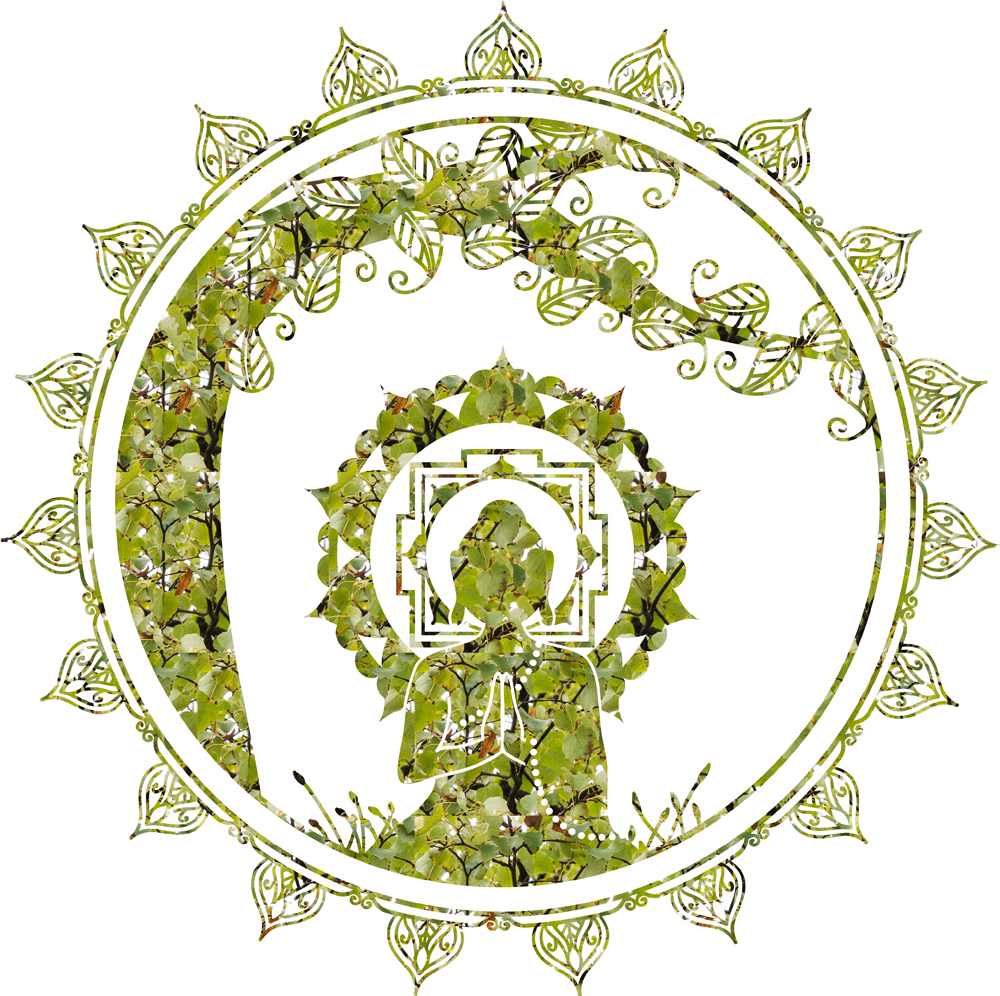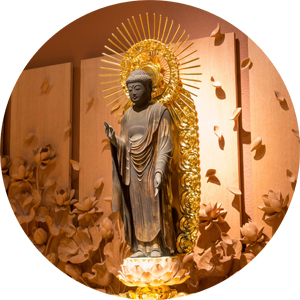Ⅳ01. Three Treasures and prasada
It is said that 2,500 years ago, when Gautama Buddha was alive, Indian Buddhists became his disciples by vowing to follow three things: their teacher Gautama, the teachings he preached, and the group of people who practiced his teachings.
From there, Buddhism spread to various parts of the world, but all Buddhists around the world have continued to practice the rituals of pledging their faith in the “SANBOU(Three Treasures).”
The SANBOU are Buddha, Dharma and Sangha.
The Three Treasures are “Buddha,” “Dharma (the teachings of the Buddha),” and “Sangha (the companions who believe in the teachings of the Buddha).” The ritual is also performed by modern Japanese Buddhists.
Article 2 of the Seventeen Articles of the Constitution, written by Prince Shoutoku, the founder of Japanese Buddhism, states, “Sincerely revere the Three Treasures.”
It states,
Buddha, Dharma and Sangha, the final refuge of all kinds of generated beings, the supreme objects of faith in all countries. What man in what age can fail to revere this Dharma?
and explains the importance of the Three Treasures.
Buddhists all over the world have begun their journey in Buddhism by vowing to SANBOU.
First of all, to believe in Buddha means to worship the existence of Buddha. It means to have “faith” and “devotion” to the existence of Buddha. This is similar to how Christians, Muslims, and Jewish people have faith in the existence of God.
However, there is a way in which Buddhism differs significantly from other religions. It is that before you can have absolute faith in the existence of the Buddha, you must believe in the truth of the Buddhist theories taught by the Buddha.
That is what it means to believe in Dharma (the teachings of the Buddha).

In order for us to recognize the existence of the Buddha, we must first recognize the truth of the Dharma. Basically, before believing in the Buddha we must believe in Dharma.
The Dharma must be a universal law of nature that applies to any time, place, or situation. Of course, it should also apply to modern cutting-edge sciences such as quantum mechanics, neuroscience, and psychology.
A being who has realized the Dharma and has become enlightened is called a “Buddha.”
Dharma is also the study and practice of the natural way of human life in order to be free from suffering.
The Buddha is the being who embodies the truth and salvation of the Dharma.

To study the teachings realized by the Buddha is to enter into his lineage of thought. This means making the Buddha’s Dharma your own “conviction” and “creed.” That also means aiming to embody the Dharma like the Buddha. That is to become a disciple of the Buddha.
In addition to me, there are many other disciples of the Buddha all over the world, in the past, present and future. Those people, to me, are fellow members of the religious lineage of the Buddha.
Those people are the “Sangha.”
One becomes a member of the Sangha by vowing “trust” and “reliance” in other Buddhists.

“Faith” and “devotion” to the Buddha.
“Conviction” and “creed” to the Dharma.
“Trust” and “reliance” to the Sangha.
All of these are acts of the human mind and refer to the state of the human mind.
Doubt clouds one’s mind. By believing wholeheartedly and without any doubts, you will feel refreshed, relieved, and light-hearted.
This state of mind is called “prasada”.
Ⅰ_Japanese Spirituality
01. Buddhism in Japan
02. Thanks to all living beings for my life here and now.
03. Becoming One with the Buddha
04. Light from the other shore
Ⅱ_The teachings of Buddha and Mahayana thought
01. HANAMATSURI -The Beginnings of Buddhism-
02. Anyone can become a Buddha, it depends on you.
Ⅲ_Prince Shotoku’s Buddhist Dharma
01. Buddha in Japan
02. Ideal of sincerity, courtesy, and harmony
03. What’s false? What’s truth?
Ⅳ_The true state of mind conveyed by Shinran
01. The Three Treasures of Buddhism
03. Neither a monk nor an layperson
Ⅴ_Listen to namamdhabud


